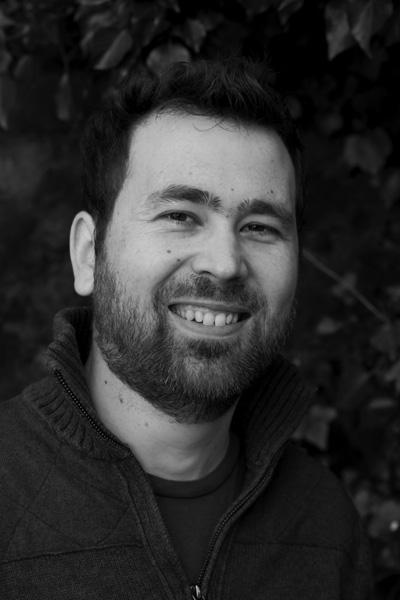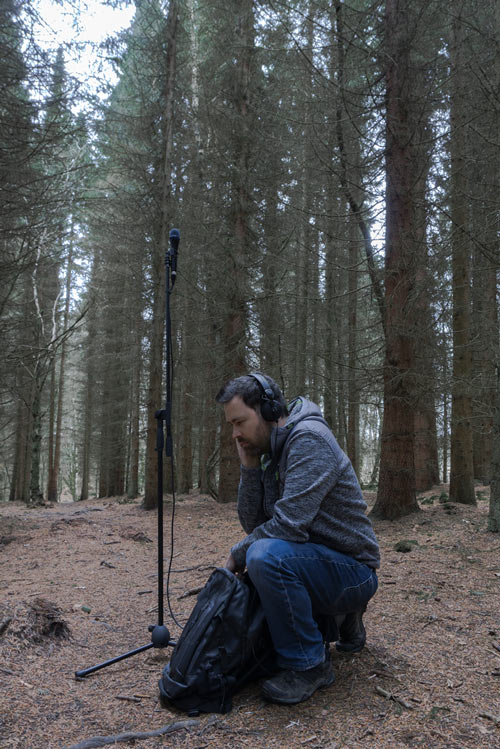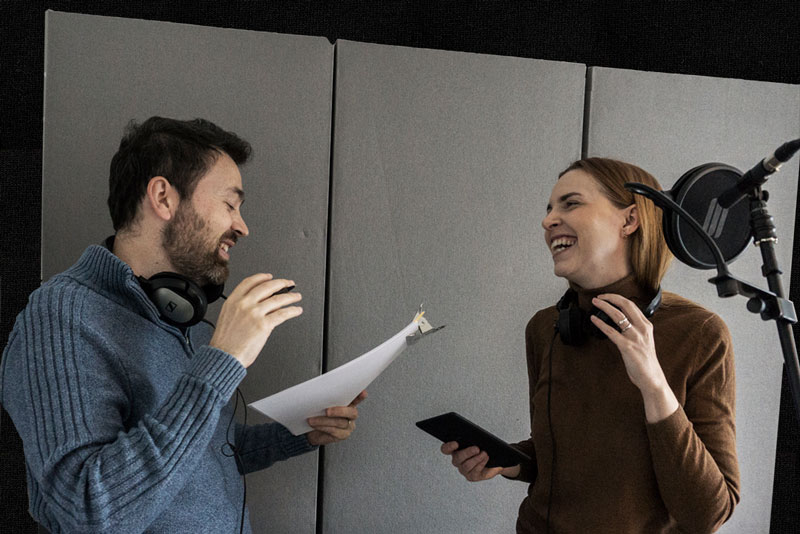
Michel Lafrance is a super talented sound designer, adept at creating high quality 3D audio experiences. Michel is the founder and managing director of Owl Field, and was kind enough to tell us a bit more about 3D audio design.
” Spatial audio goes beyond merely ‘immersion”
Michel Lafrance
How did you get started in 3D audio drama?
I took a different route to audio drama than most. My background in audio one day led me to discover the famed binaural experience Virtual Haircut on YouTube. By the end of the video, I was making plans to create movie-like binaural audio experiences with the listener at the centre. Of course, I did eventually discover the very welcoming audio drama community. I went about researching everything I could about how to create binaural audio. I experimented with various microphones, microphone techniques, and post-production software available at the time to find the approach that would allow me to express my vision.

Binaural productions are really growing in popularity. What is special about a binaural production?
My goal with Owl Field has been to produce the most immersive experience possible, so I consider using spatial audio and placing the listener at the centre of the action essential to that end. Spatial audio goes beyond merely ‘immersion’, it gives the listener the sense of ‘presence’ you receive from virtual and augmented reality experiences.
“You have so much more space and depth to work with than traditional stereo sound”
Michel Lafrance
What do you most enjoy about your work?
It’s a long list, but at the top is building soundscapes. You have so much more space and depth to work with than traditional stereo sound. There are many added considerations that come with building ambience in 3D, for instance a sound needs to be appropriately quiet to be realistically distant, but I love the challenge of working the balance for every single element in a scene.

What are the most challenging situations you have found yourself in professionally, and how did you overcome them?
Trying to get companies on board early on was exasperating. I consulted for dozens of media companies about how spatial audio was the next step in the evolution of audio storytelling, how it could augment their intellectual properties, and how it could be achieved on their platforms. I was simply too early; international markets were only just getting used to standard stereo audio drama and podcasts were just getting off the ground. There was interest, but audio was still mostly considered a multi-tasking activity, which is not ideal for spatial audio which tends to have a greater dynamic range. I’m proud of the work I did to promote the idea that immersive audio content would encourage and reward the listener for giving it their full attention and could compete with the likes of VoD streaming for at-home consumption.
” I’m proud of the work I did to promote the idea that immersive audio content would encourage and reward the listener”
Michel Lafrance
What has been your best professional experience so far? Is there a project you particularly enjoyed? What has been your proudest professional moment so far?
Completing 3D Escape Room: Frequency was a feat in itself. The fact that it was a full cast audio drama with fully spatialised audio is practically an afterthought. It was a novel format and first interactive podcast, and although we had done an interactive audio drama before with The Fairy Tree, this was a different beast as we needed to guide the player through the game without them accidentally skipping ahead. On top of that, we had to design a variety of audio puzzles, puzzles that were of an appropriate difficulty level for most people, manage how and when to give the player hints, and time everything so it worked as a sixty-minute escape room! Receiving the feedback that first week after release that confirmed that all the planning had paid off was extremely rewarding.
What are your top tips for producing a top quality binaural experience?
The first decision to make is what is your preferred sound: the live sound of spatial recording or the polished sound of post-production. They both have their pros and cons and I’d strongly recommend experimenting with them to really understand where they excel and where their limitations are. Most of my projects incorporate various techniques and different software depending on the scene or the sound.
Apart from deciding on your preferred approach, my top tip is to take great care in the consideration of depth. To achieve proper realism, objects need proper depth. Meaning, if something is meant to be in the distance, it needs to be quiet. But if something is quiet, the listener – whose listening environment is out of your control – might not be able to hear it, so you’ve got to be constantly balancing your desired realism with the element’s intelligibility. If you play it safe and have everything loud, it’ll negatively impact the binaural experience.
What are you working on at the moment?
I’m working on a sci-fi podcast series for Echoverse which is going to be outrageously fun and a surreal listening experience.
Where can listeners enjoy your work?
We have productions for sale at owlfield.com, and 3D Escape Room: Frequency is a free podcast. In addition, some short stories are free to members on Audible.co.uk, and there is some of our childrens’ content available on Pinna.
Binaural audio drama at Wireless Theatre
